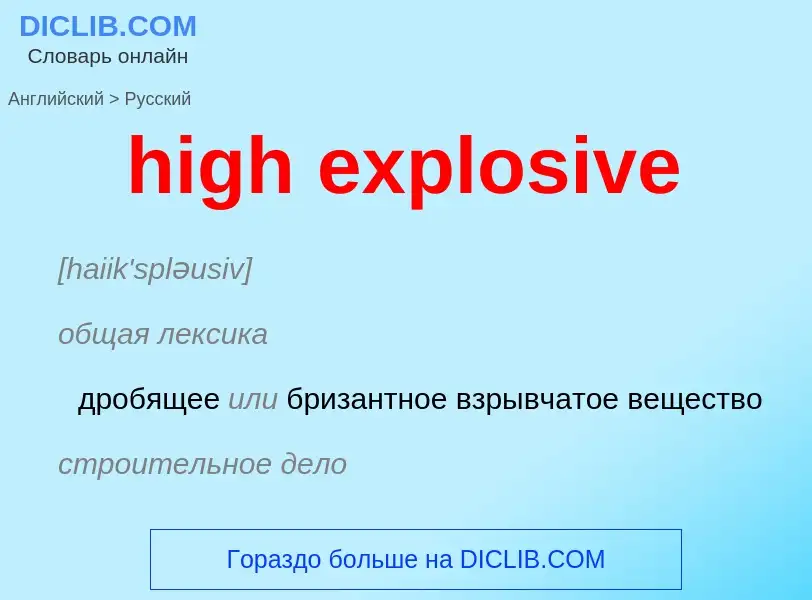Перевод и анализ слов искусственным интеллектом ChatGPT
На этой странице Вы можете получить подробный анализ слова или словосочетания, произведенный с помощью лучшей на сегодняшний день технологии искусственного интеллекта:
- как употребляется слово
- частота употребления
- используется оно чаще в устной или письменной речи
- варианты перевода слова
- примеры употребления (несколько фраз с переводом)
- этимология
high explosive - перевод на русский
[haiik'spləusiv]
общая лексика
дробящее или бризантное взрывчатое вещество
строительное дело
бризантное ВВ
нефтегазовая промышленность
бризантное взрывчатое вещество
существительное
общая лексика
бризантное взрывчатое вещество
[haiik'spləusiv]
прилагательное
военное дело
фугасный
бризантный
[ləuik'spləusiv]
военное дело
медленно горящее взрывчатое вещество
нефтегазовая промышленность
низкоэнергетическое взрывчатое вещество
нефтегазовая промышленность
детонирующее взрывчатое вещество
Определение
Википедия
An explosive (or explosive material) is a reactive substance that contains a great amount of potential energy that can produce an explosion if released suddenly, usually accompanied by the production of light, heat, sound, and pressure. An explosive charge is a measured quantity of explosive material, which may either be composed solely of one ingredient or be a mixture containing at least two substances.
The potential energy stored in an explosive material may, for example, be
- chemical energy, such as nitroglycerin or grain dust
- pressurized gas, such as a gas cylinder, aerosol can, or BLEVE
- nuclear energy, such as in the fissile isotopes uranium-235 and plutonium-239
Explosive materials may be categorized by the speed at which they expand. Materials that detonate (the front of the chemical reaction moves faster through the material than the speed of sound) are said to be "high explosives" and materials that deflagrate are said to be "low explosives". Explosives may also be categorized by their sensitivity. Sensitive materials that can be initiated by a relatively small amount of heat or pressure are primary explosives and materials that are relatively insensitive are secondary or tertiary explosives.
A wide variety of chemicals can explode; a smaller number are manufactured specifically for the purpose of being used as explosives. The remainder are too dangerous, sensitive, toxic, expensive, unstable, or prone to decomposition or degradation over short time spans.
In contrast, some materials are merely combustible or flammable if they burn without exploding.
The distinction, however, is not razor-sharp. Certain materials—dusts, powders, gases, or volatile organic liquids—may be simply combustible or flammable under ordinary conditions, but become explosive in specific situations or forms, such as dispersed airborne clouds, or confinement or sudden release.

 (cropped).jpg?width=200)
